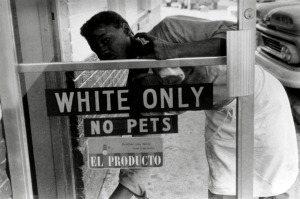
Plessy vs Ferguson is one of the U.S. Supreme Court’s historic decisions on civil rights. Plessy vs Ferguson was the first major investigation into the meaning of the Fourteenth Amendment’s equal-protection clause, which prohibits the states from denying “equal protection of the laws,” to their citizens.
The case of Plessy vs Ferguson originally started in 1892 as a challenge to Louisiana’s Separate Car Act adopted in 1890. In this law, the “equal but separate accommodations” for African Americans passengers didn’t allow them to enter rail cars other than the ones they had been assigned to based on their race. In 1891, a group of colored professionals in New Orleans created the Citizen’s Committee to test the Constitutionality of the Separate Car act. They hired Albion Tourgee, a Reconstruction-era judge and social reformer, as their legal counsel. As a plaintiff in the case, the Committee decided to choose a person of mixed race in order to prove the law did not apply because it failed to define what is meant by the white and colored races.
Homer Plessy was seven-eighths white and one-eighth colored. He bought a rail ticket for travel within Louisiana and then sat in a car only meant for whites. He was told to move to a car for colored people only, but he refused and was arrested and charged with violating the Separate Car Act. At the United States District Court, Judge John H. Ferguson dismissed Plessy’s contention that the act was unconstitutional. On April 13th , 1896, the U.S. Supreme Court granted Certiorari (a writ or order by which a higher court reviews a decision of lower court) and heard oral arguments. The Court rendered its decision one month later on May 18th , 1896.
Associate Justice Henry Billings Brown rejected Plessy’s argument that the Act violated the Thirteenth Amendment, which forbade slavery, and the Fourteenth Amendment which granted full and equal rights of citizenship to African Americans. According to Brown, the Separate Car Act didn’t conflict with the Thirteenth Amendment because it didn’t include slavery or constitute a “badge” of slavery. While reaching the conclusion he relied on the Supreme Court’s ruling in the Civil Rights Cases (1883.) is case found that racial discrimination against African Americans in inns, public conveyances, and places of public amusement “impose no badge of slavery or servitude... but, at most, infringes rights which are protected from states aggression by the 14th Amendment.”
Brown argued that the act didn’t conflict with the Fourteenth Amendment either, because that Amendment was intended to secure only that legal equality was adequately respected. Accommodations provided for each race were required to be equal and the racial segregation of passengers did not by itself imply the legal inferiority of either race. Numerous state-court decisions had affirmed the constitutionality of laws establishing separate public schools for African American and white children. Social equality, which would entail the “commingling” of the races in public conveyances and other places, didn’t then exist and could not be legally created: “if one race be inferior to the other socially, the constitution of the United States can’t put them upon the same plane”. In response to Plessy’s comparison of the Separate Car Act to hypothetical states requiring African Americans and whites to walk on different sides of the street, or live in plain colored houses, Brown responded that the Separate Car Act was intended to preserve “public peace and good order” and was a “reasonable” exercise of the legislative police power.
Plessy vs Ferguson helped people of color take a small but important step on the long quest for equal rights by challenging the discriminating laws.
[Source:
Britannica.com
]

